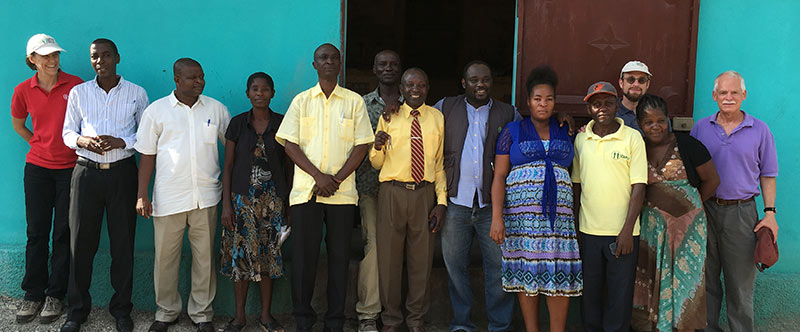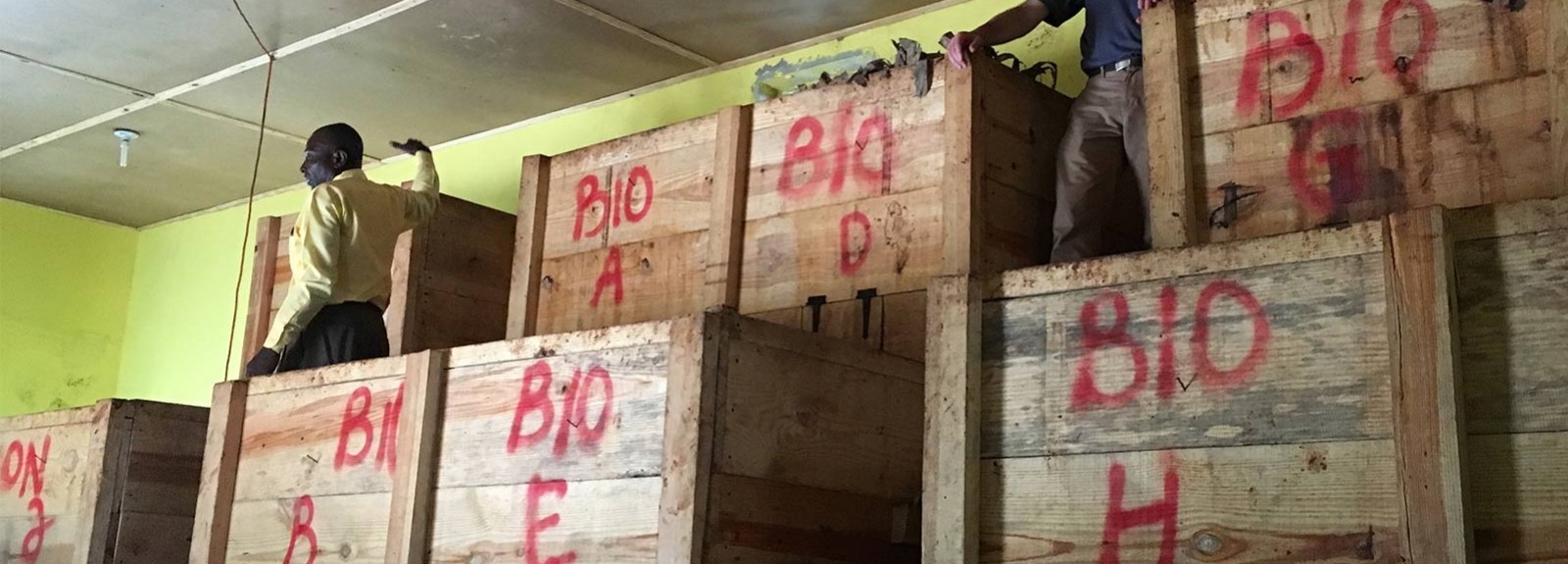One of the things I’ve learned over the years in my many visits to coffee and cocoa farmers in Central America is that even with meticulous planning and preparation, your daily schedule will soon go out of whack.
Sometimes it’s the weather. Or it could be a broken-down vehicle. In the case of my recent visit to cacao farmers in northern Haiti, we were delayed – but not defeated – by the pothole-studded roads.
We started out early in the morning from the coastal town of Cap Haitien and drove for more than an hour, stopping briefly at a small cooperative, before continuing on a paved, but heavily potholed road to the town of Port Margot. We were bound for the inauguration of a new fermentation facility at CAFUP, one of seven primary-level cooperatives that make up of the Lutheran World Relief-supported Federation of Cocoa Cooperatives in the North (FECCANO).
Due to the road conditions we arrived almost two hours late to the inauguration. When we finally arrived, we found about 40 men and women patiently waiting for us. A tent had been set up to protect attendees from the strong, hot sun and potential rain, with plenty of metal folding chairs (with "FECCANO" stenciled on their backs) set up neatly in rows.

The president of the cooperative spoke a few words, and then introduced the newly elected alcalde (mayor) of the village who gave a very motivating talk that made it clear how important this cooperative was to the greater Port Margot community.
Myron Burkholder, LWR’s deputy regional director for Latin America, then provided some very nice words of welcome and thanks to not only those present, but to the donors who made the project possible. He reminded those present that these donors are individuals (whether they made a personal contribution, or whether they paid taxes to the U.S. government which offered funding support). I gave a short talk, thanked those present for all of their work, and presented the president of the cooperative a set of keys to the new fermentation building.

At this point, everyone walked over to the new facility - about 25 meters away - as the president of the cooperative tried one key after another to open the door. It wouldn't open!! Fortunately his wife had a spare set of keys that did work, and to some applause, the new fermentation facility was officially opened.
Inside were new wooden fermentation boxes, tiered like stairs. Here the cacao is fermented for 48 hours in the top tier; 48 hours in the middle tier, and 24 hours in the bottom tier.
Seeing the new facility and the promise that it offers this community made the challenging journey all the more satisfying. It will greatly enhance the cooperative’s capacity to improve and maintain the quality of the cacao that the farmers deliver to the facility. The improvement in quality should translate into greater earnings for the farmers. Murphy’s Law may have taken the morning, but the collaboration between all of these partners that resulted in this successful project won the day.


